There are several methods to remove dead grass after it has been Roundup up. The simplest method involves a power rake and a shovel, but simpler methods are more expensive. Beneath you can see a few straightforward choices, as nicely as what ought to be accomplished to restore the soil after it contains existed influenced by Roundup.
Finally, let’s learn about the ways how to remove dead grass after Roundup.
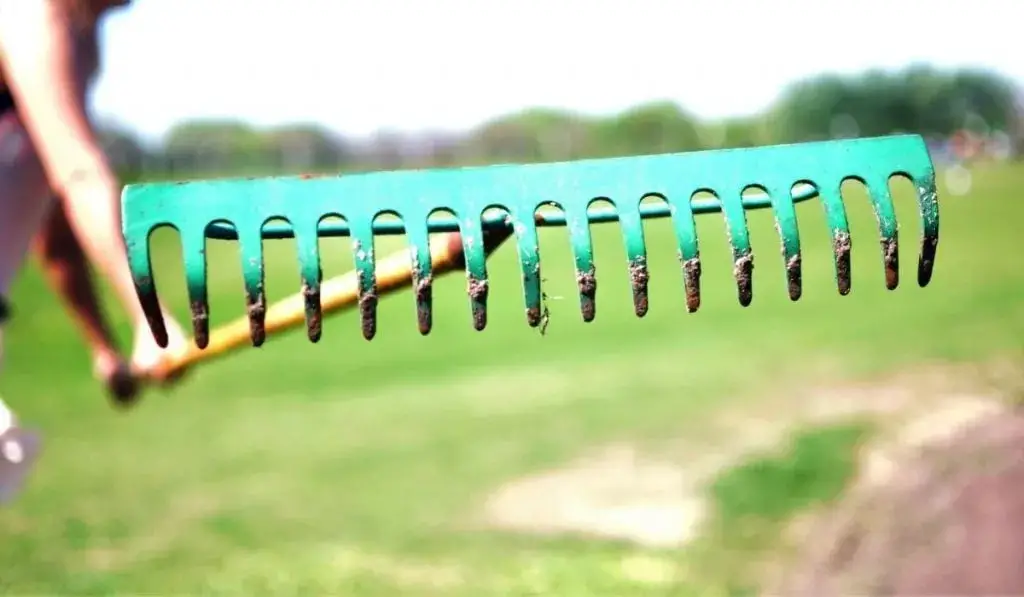
How to remove dead grass after Roundup?
So how to remove dead grass after Roundup kills? Let’s figure it out.
Once you’ve killed the grass and weed with Roundup, there are several methods you can use to obtain rid of the destroyed dry vegetation. They are:
- Dismiss the dead lawn with a sod cutter;
- Mow the dead grass as low to the ground as possible, and then use a power rake to remove any remaining material;
- Use a trimmer to snip dead grass at the ground layer;
- After mowing the grass low down to the remaining dead grass in the soil;
- In small areas, use a shovel to cut away dead grass, removing 2 to 4 inches of topsoil to get rid of grassroots.
Some methods are best for removing dead grass from an entire yard, while others are good for getting rid of small patches of dead grass or dead grass growing through concrete. Read on for more information on how and when to use each of these methods.
How long does Roundup stay active in the soil?
If you have stayed 14 days after spraying Roundup and your senior grass is dead, then your lawn is prepared for new grass or another vegetal. All you own to accomplish is to yank the aged grass sooner.
- Sites treated with Roundup are secure for planting garden vegetables and herbs for 3 days;
- You can plant new grass immediately after removing dead grass.

Maintain in reason that this uses for normal Roundup products. Some Roundup formulations are created to control new plant growth for several months thereafter. If you employed one of these to kill grass, anything you plant on the site will not grow.
Does Roundup kill grass?
Grass killed by Roundup does not grow back from the root. Roundup is a very effective chemical herbicide that completely destroys all kinds of plants. If a herbaceous plant turns brown 14 days after being sprayed with Roundup, it will not come back.
- Roundup completely kills the grass, stopping regrowth from the roots;
- Roundup does not kill seeds. Weed and grass seedlings may germinate in areas previously treated with Roundup.
Standard Roundup does not act as a pre-emergence herbicide, so it does not kill weeds or grass seeds in the soil. The area where the grass killed with the Roundup is inclined to re-attack, so it’s time to plant a new lawn or take additional weed control measures.
Wait 2 weeks before removing grass
Roundup is an effective post-emergence herbicide that kills grass and weed right down to the root with very little chance of error. However, this process takes time.
Rushing can result in only partial removal of dead grass and plant debris, or disruption of the process resulting in only the top layer of weed or grass dying off.
Always wait a full 2 weeks before proceeding with dead grass and plants debris removal or other landscaping after using Roundup.
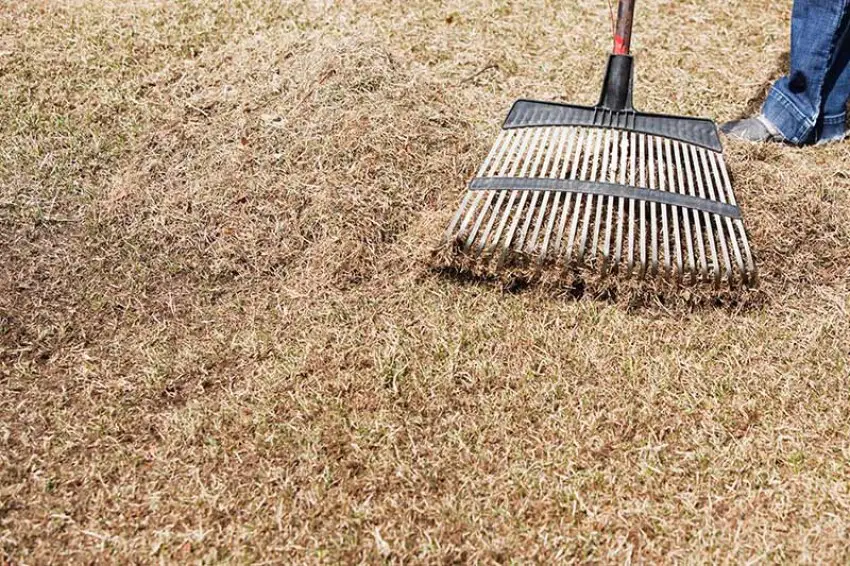
How do you get rid of dead weeds after using Roundup?
Behind you have sprayed grass, weed, or any other vegetation with Roundup, wait 14 days before starting the removal. This gives Roundup time to infiltrate the plant, killing it down to its roots.
- Wait 14 days after using Roundup before removing dead herbs;
- Roundup is systemic, non-selective herbicides that take 7-14 days to kill plants;
- Attempting to remove too soon after applying Roundup may result in the grass not dying – it may grow back.
Once your grass is completely destroyed by Roundup, it’s time to get rid of the old lawn.
Gather dead grass after harvest with a sod cutter
If you want to remove dead grass from a large area, a new sod cutter may be the most effective way to remove large amounts of dead grass; roots and all. In many cases, renting a sod cutter is the most economical way to purchase this tool, as it is hardly ever used other than to remove large areas of the divot and dead grass.
Most hardware stores will rent them out to you, or you can hire a local lawn and garden company to remove lawns.
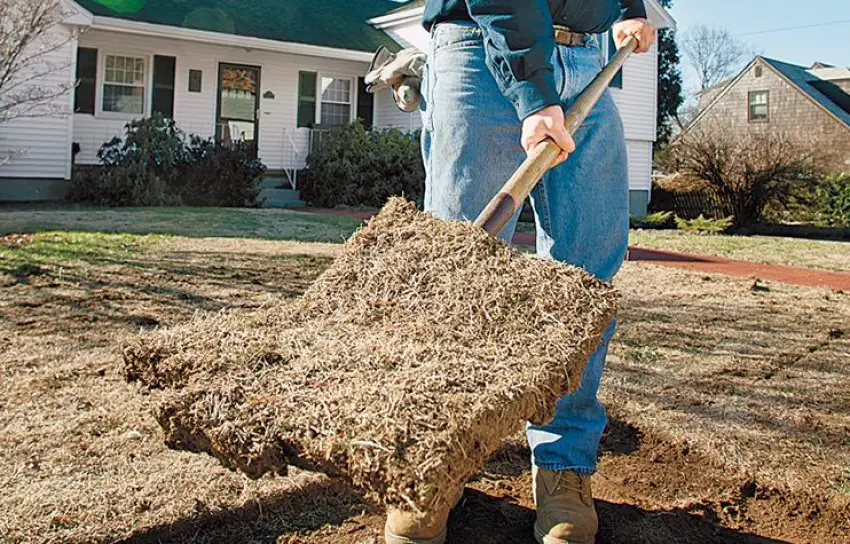
The new sod cutter will cut dead grass and sod at any depth you set. Usually, it is 2 to 3 inches. Sod cutters, while easier to use than a shovel, can still be very difficult to maneuver and lift.
It can be helpful to have another person around to help you make the most of your rental time. Although the sod cutter will cut the sod off the soil, it is important to note that the new sod and grass will then need to be rolled up and hauled out by hand.
Grass clippings
As an alternative to using a lawn mower, you can remove dead grass from your entire lawn with a normal power rake and lawn mower. To do this, observe these actions:
- Place the mower cutter to its lower set to mow grass close to ground level;
- Grass clippings in your garden carefully, collecting the mow grass in a bag;
- Use a puller or electric rake to remove any remaining straw and root material;
- Mow and repack to remove thatch;
- Rake up the remaining straw and dump it.
This process is frequently quicker than utilizing a divot knife, and it doesn’t pull special topsoil from your yard. If you intend on reseeding your lawn within the following occasional months, this is the finest method to remove dead grass from your entire lawn yard.

Collect dead grass after Roundup by tilling the soil
It’s not so much a method of removing dead grass after Roundup, but a way to make the most of it. All you need is a tiller. Larger and heavier models are best suited for this task.
While a lighter model can be used, you will need to make many more passes, while with the type of cultivator you can rent from most farm or hardware stores, you can do it in one pass and only need to clear the yard to even it out.
Whatever type of cultivator you choose, be sure to set it to a depth of about 6 inches. This makes sure that grass and weed are drawn deep into the soil and do not become a problem for new shoot roots or new grass seed placement.
Collect dead grass after the Roundup by digging and raking
The next option, and perhaps the most thorough option after using the sod cutter, is the more “traditional” method of digging and raking.

For this to work, it can be helpful to cut the lawn as short as possible and collect or rake the cut grass first. If you have a straw removal tool, run it over your lawn, and it will be easier for you to dig into the ground with a shovel.
Once you start digging, you have two options for what to do with the sod. First, you can try to stick the shovel just a few inches underground and cut the grass at the already dead roots. This sod can then be composted or discarded.
Alternatively, many people choose to dig 4-6 inches and then turn the sod over. Dead grass will decompose and, over time, will nourish your new lawn or any plants added to the area. Once everything is dug up, rake the area to smooth it out and pick up any small remaining clumps of dead grass.
Collect dead grass after harvest by trimming
This method is only applicable if you are trying to kill grass between rocks or other types of cracks and crevices. Roundup kills grass and any other plant on the vine. This means that even if you do not remove the entire plant, it will not continue to grow. Any weed growing between the rocks can be cut at ground level and will collapse over time.
This is also true if you plan on placing rocks or other materials on top of freshly cut grass. All you need to do is cut the grass as low as possible first.
However, it may also be helpful to sprinkle the area with a germination inhibitor such as seed gluten meal to prevent weed or grass seeds from growing. This seed may have been blown by the wind from the Roundup spray and therefore not affected by the glyphosate.
You may also be interested in: John Deere 5065e Will Not Move (Problems + Solutions)
What can I use to remove dead grass?
It is important not to remove all of the grass, but just break up the top layer of thatch. Remove the loose dead thatch either with shovels, by hand, or with a string trimmer. Do not leave any clumps on the lawn. Re-seed the barren patch of lawn and water if applicable.
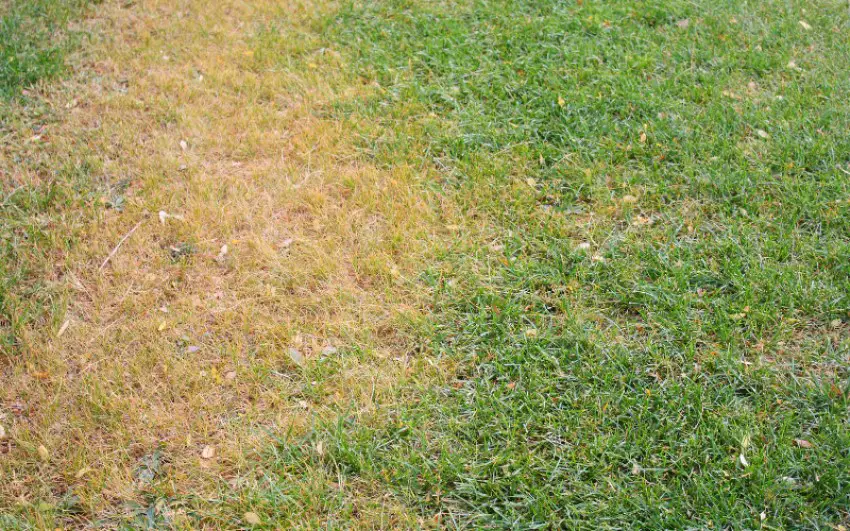
Sod cutter
You can lease a sod cutter from your native hardware shop. These convenient motorized tools will remove living grass from your lawn along with a 2-3 inch top layer of soil where the grassroots are the widest.
This opportunity is excellent for getting rid of dead grass and root material to reveal the topsoil. This is important when removing dead grass before qualifying to seed the lawns or lay down new turf.
Finest for: Equipping big yards for new turf.
Cultivator
When used correctly, the cultivator can recombine dead grass with the soil. This will loosen the soil, causing it a finer location for new grass or sod seeds to take root. It also includes dead grass with mud to run up decay. To complete this technique job, do the pursuing:
- Mow dry grass at the lowest mower blade height. Pack the cut grass in a bag;
- Use the cultivator to thoroughly plow up the dead grass to a deep of 6 inches.
For this purpose, you can rent a cultivator from a topical hardware shop. Digging up dead grass into the soil is quite useful in scheduling the soil for divot or seed placement. However, tillage can cause buried weed seeds to float to the surface, where they attempt to germinate. Drench the site for 2 weeks and destroy any germinating weeds or unwanted grasses.
Suitable for: Large areas where new seeds or sod will be planted.
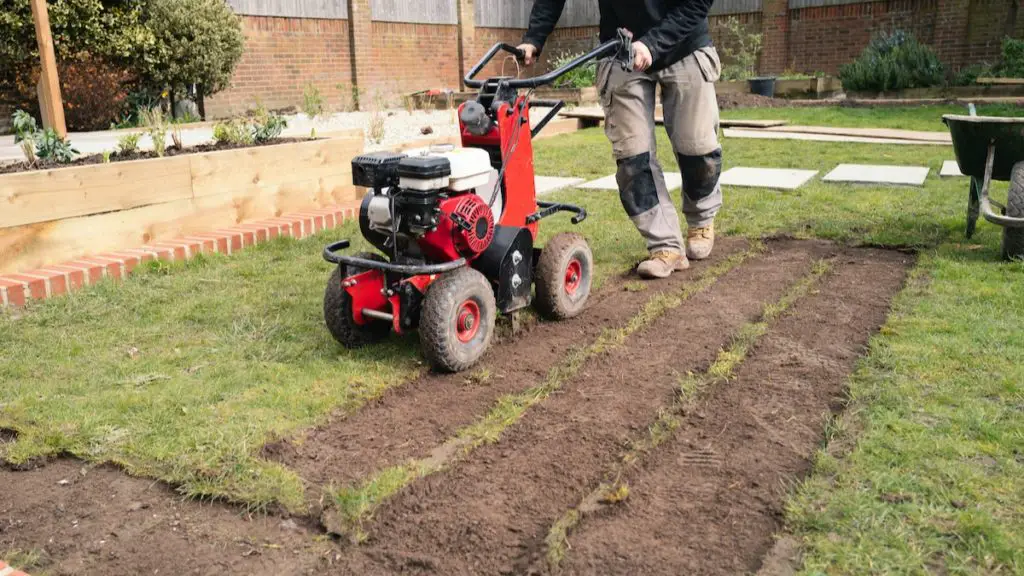
String trimmer
Behind you’ve employed Roundup to kill grass sprouting between bricks or concrete joints, use the string trimmer to cut the dead grass at ground level. Since glyphosate, the active ingredient in Roundup, kills grass down to its roots, you won’t have to worry about growing again. Dead roots decay innately.
This technique can even exist employed on small patches of grass in the yard. A string trimmer positioned near to the ground will cut dead grass at ground level and break up the tough straws. We do not recommend employing a string trimmer if you are trying to remove dead weeds from stones.
Suitable for: Removing dead grass between pavers or in definite joints.
Shovel
When removing dead grass in small areas of your yard, there is no requirement to lease heavy motorized equipment. To obtain rid of grass killed by the Roundup, you can use a shovel or a square shovel.
- Use a shovel to cut the dead grass into approximately 8 square inches squares.
- Remove 8-inch patches of dead grass along with 2-3 inches of topsoil;
- Clearing the topsoil acquires rid of origins and thatch, preparing the ground for new sod or seeds.
This method essentially repeats the operation of a divot cutter on a smaller scale. To make your job easier, water the area the day before you plan to remove dead grass. This will make digging easier.
Suitable for: Preparing small areas where seeds or new turf will be planted next to existing grass.
Frequently Asked Questions
Does Roundup kill weeds instantly?
Within 7-14 days, Roundup will kill all weeds, grasses, and plants it is sprayed on. Wait for this time to pass before pulling or cutting weeds that have been sprayed with Roundup to make sure it is doing its job. Since Roundup is a non-selective herbicide, it will kill any plant it is sprayed on within minutes.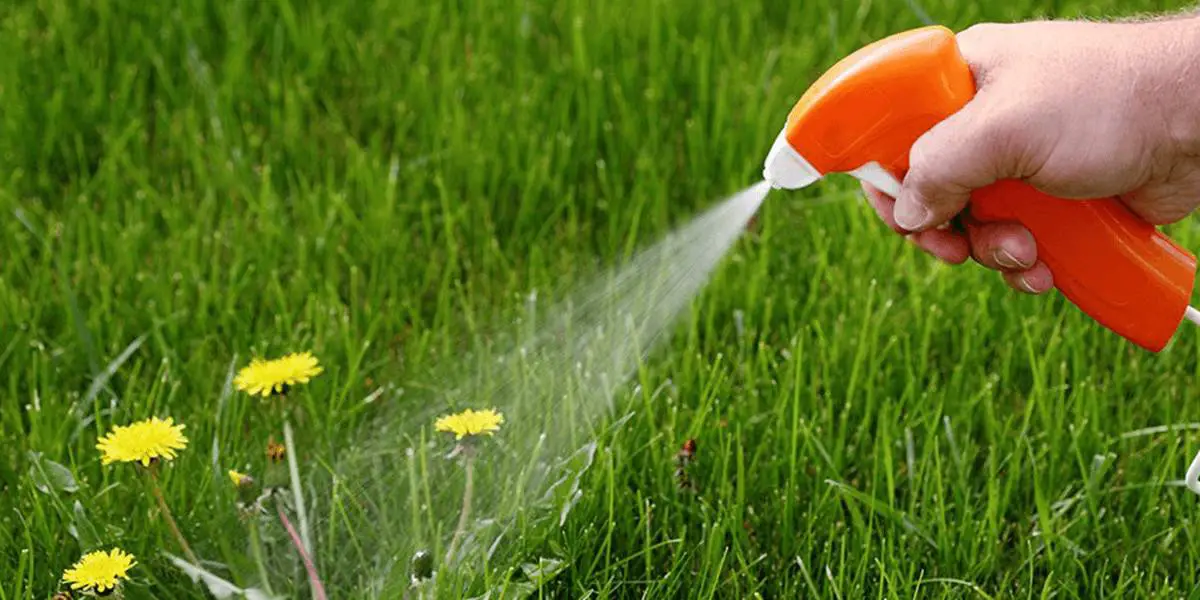
When can you touch weed after a Roundup?
Most herbicides evaporate after 24-78 hours. This means that for the most part, it is safe to plant anything, edible or not, in the area where you sprayed the weed killer three days later. If you want to be more sure, you can wait a week or two before planting.
What happens if it rains after spraying Roundup?
Safe application on rainy days, Roundup only takes 30 minutes to penetrate the leaves before it starts to rain; after 30 minutes, do not go out into the rain. However, after a rainstorm, it can take several hours before the foliage is completely dry, especially if the weather is wet.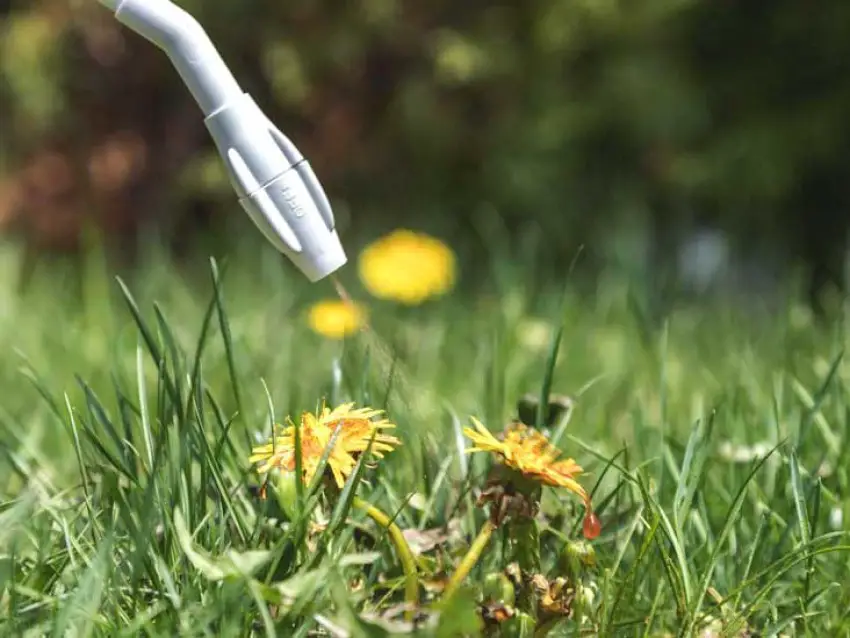
How long does it take for Roundup to get to the roots?
After 30 minutes the product becomes rain tolerant and the weeds should begin to wilt and turn yellow in about three hours with complete root death in one to two weeks.
Why is my Roundup not working?
Weed killers like glyphosate must be absorbed and moved through the plant to work. Finally, liquid herbicides may not work because they were too diluted when mixed. All pesticides work best when mixed at the recommended mixing ratio on the label.
What is the best time of day to spray Roundup?
The Liberty label states that the application must be done between sunrise and two hours before sunset to avoid the possibility of a controlled breach. Recent observations also indicate that the remedy may have less control when applied after sunset.
Conclusion
While there are multiple options for removing dead grass behind using Roundup, if you’re an entire yard, the process can be difficult to no point which choice you prefer. It’s inevitable.
Nevertheless, it is considerably more comfortable than trying to uproot living turf, grass, or weeds. Once you’re successful, you’ll have to put in even more work if you desire the finest soil for your planting or new lawns, but the job will exist worth it when you see the final result.
- Why Are There Still No Tomatoes in My Tomato Plants? Let’s Fix the Issue! - July 13, 2023
- Water Propagation White Stuff on Roots: Everything You Should Know! - July 11, 2023
- String of Dolphins Drying Up: Solved! - July 11, 2023

Pingback: Bermuda Seed Heads Good or Bad: Facts Exposed